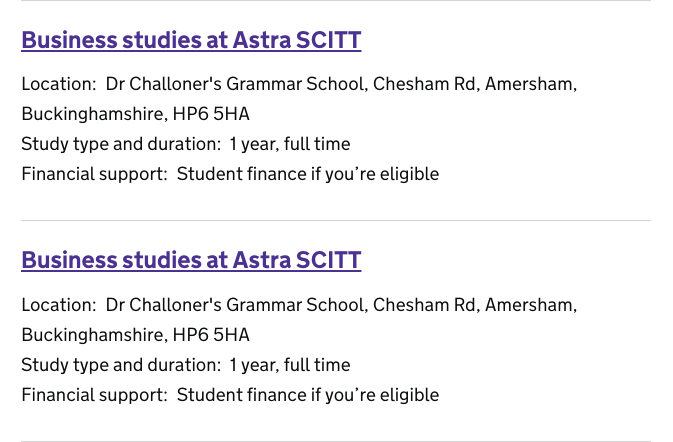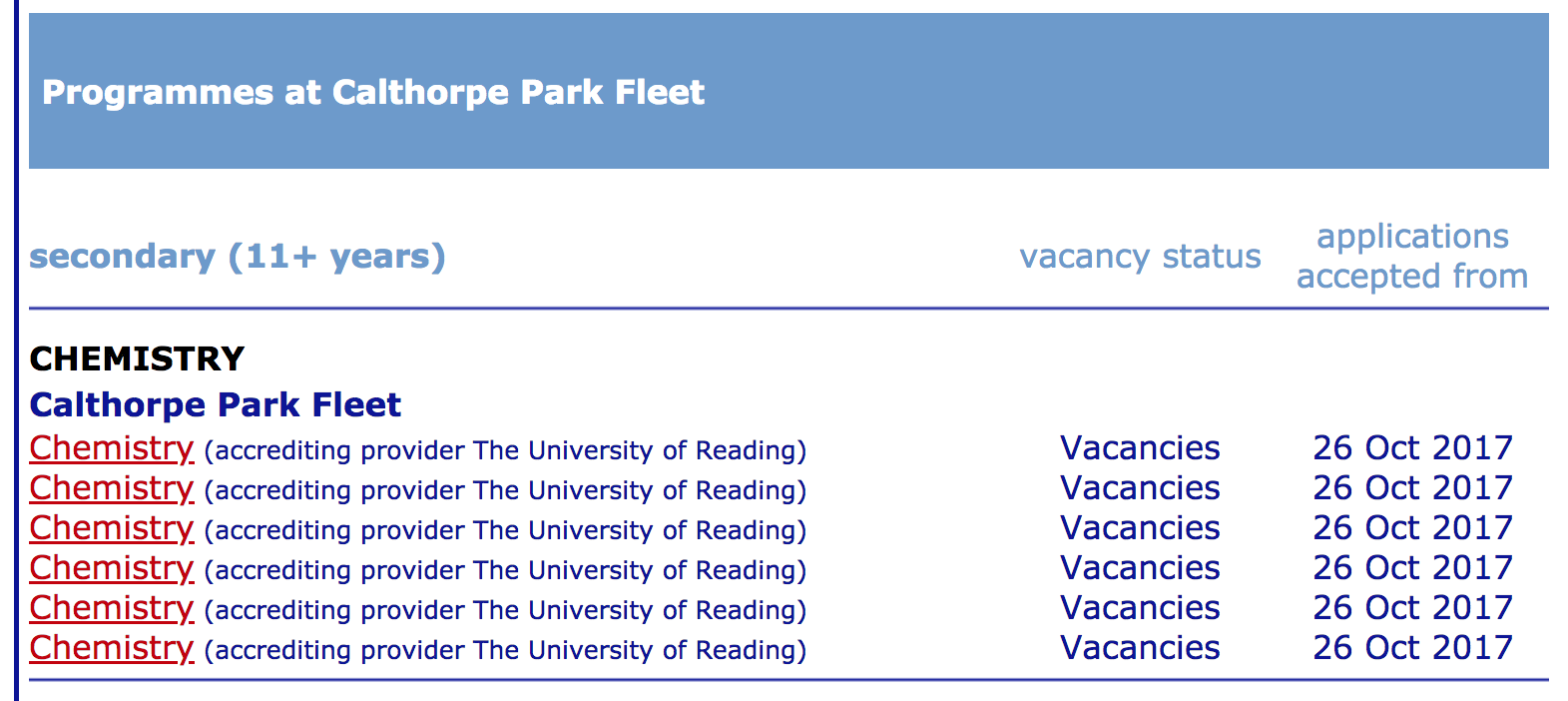Why are we questioning this?
We asked providers for their business studies courses using a spreadsheet.
What we got back from providers was inconsistent. Providers had different ideas about what a course was.
When we looked at UCAS course data we found a similar picture.
When we asked providers about this, we found that they wanted a clear definition from us.
Our definition will affect what we show to candidates and what providers need to manage.
Questions we asked
Should this be one search result or two?
What will training providers manage?
What’s the difference between:
- A full time course vs a part time one
- A course from the same provider, for the same subject but with a different accrediting provider
- A course with a salary vs one without
- A course offering a PGCE with QTS vs one with only a QTS
Examples of the problem

Two very similar search results in private beta. One is full time and one is part time.

Two identical search results in private beta. One is PGCE with QTS, the other is QTS only.

A similar problem with UCAS – 6 courses, one per school.

Another UCAS example – four courses, different accrediting providers, two salaried and two unsalaried.
What makes a good search result?
Users compare search results to find courses that meet their needs.
Search results must be distinct, and the differences between them must be clear.
A search result is…
A [subject] and a [training provider].
For example:
- Chemistry at UCL, University College London
- Chemistry at Calthorpe Park Fleet
- Chemistry at University of Sussex
It’s a decision about what to study and who delivers the training.
Further decisions are options that relate to what that provider offers.
Make options clear
Each search result must show what options are available.
The course page becomes a space for providers to explain to candidates the differences between those options.
When applying for a course the options decision becomes explicit and candidates can make an informed choice.
What this means
We will have one page representing many UCAS courses.
We need to map UCAS course data to our definition.
We will have fewer courses, meaning fewer results for candidates to look through and fewer courses for providers to manage in our tool.
What next
We’ve created these designs based on UCAS course data and existing user research.
We need to validate and iterate them with users and training providers.
We will use our course definition to create the data models and user interface for managing courses.
This will inform iterations to our candidate course page.